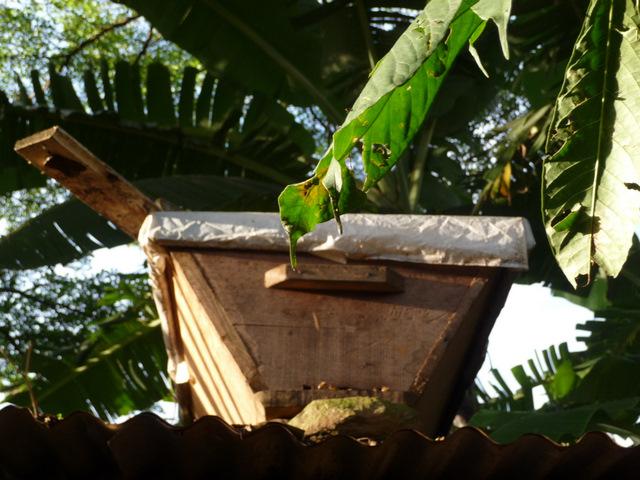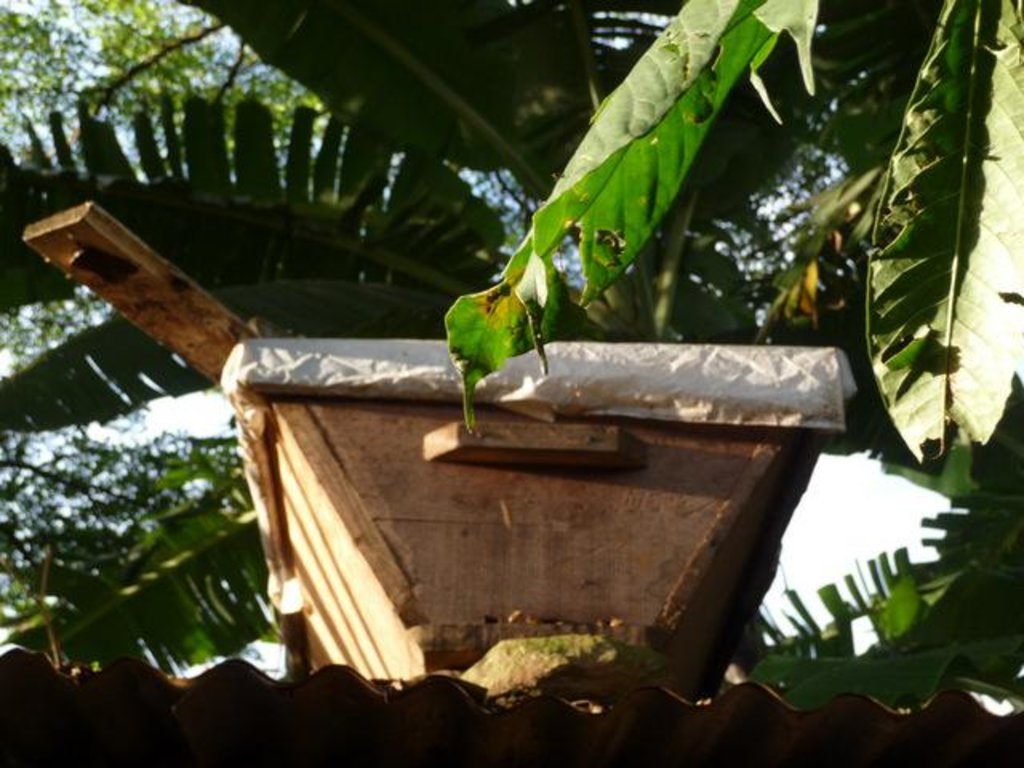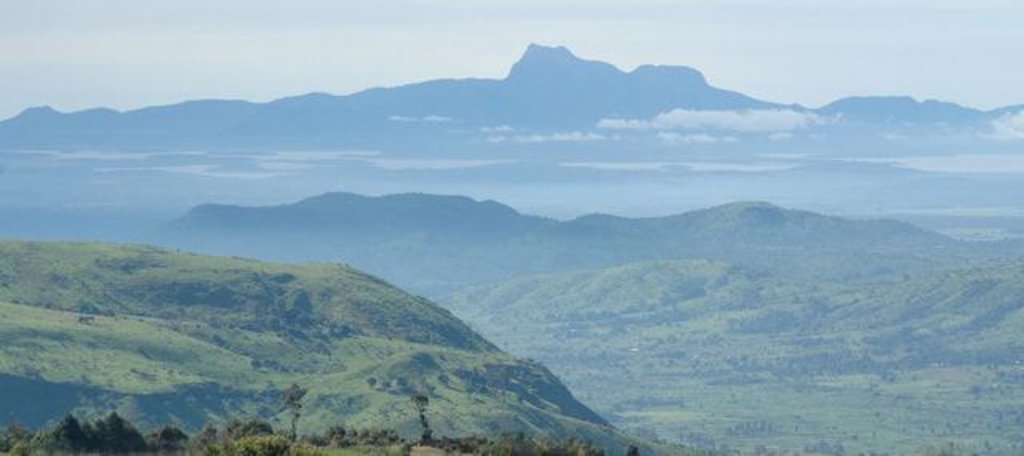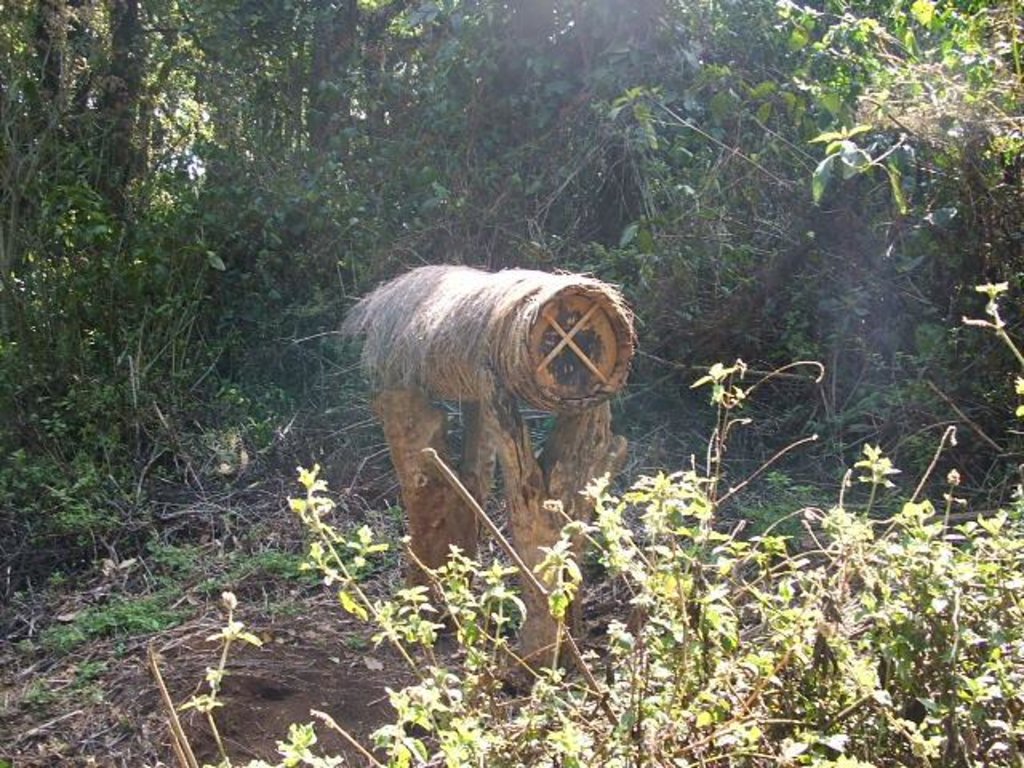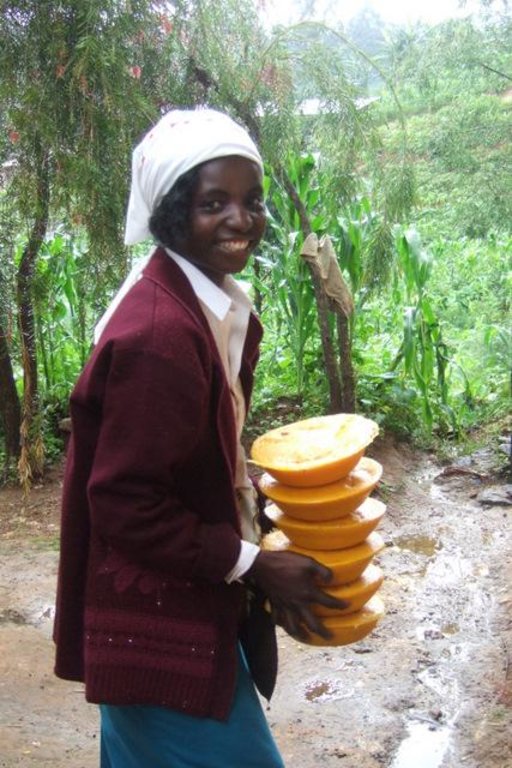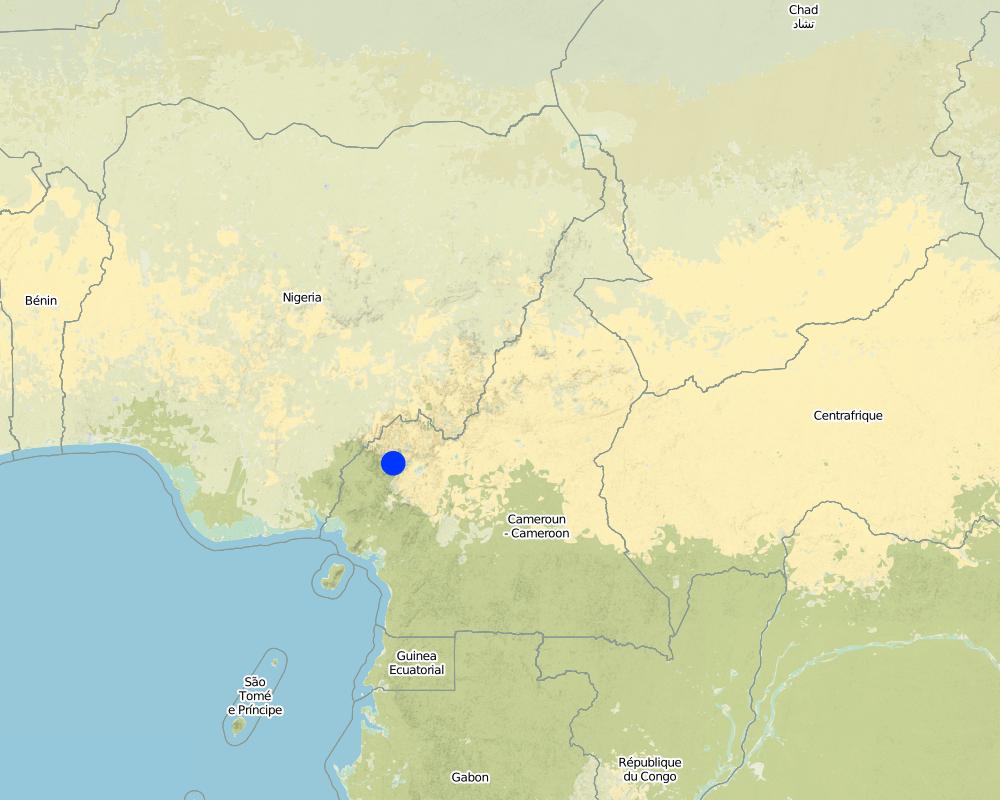Forest Beekeeping [Cameroon]
- Creation:
- Update:
- Compiler: Unknown User
- Editor: –
- Reviewer: Fabian Ottiger
technologies_1360 - Cameroon
View sections
Expand all Collapse all1. General information
1.2 Contact details of resource persons and institutions involved in the assessment and documentation of the Technology
Key resource person(s)
SLM specialist:
Verina Ingram
Cifor Cameroon
Yaounde
Cameroon
Name of project which facilitated the documentation/ evaluation of the Technology (if relevant)
Book project: SLM in Practice - Guidelines and Best Practices for Sub-Saharan Africa (SLM in Practice)Name of the institution(s) which facilitated the documentation/ evaluation of the Technology (if relevant)
CIFOR Center for International Forestry Research (CIFOR) - India1.3 Conditions regarding the use of data documented through WOCAT
The compiler and key resource person(s) accept the conditions regarding the use of data documented through WOCAT:
Ja
2. Description of the SLM Technology
2.1 Short description of the Technology
Definition of the Technology:
Apiculture (beekeeping) is a traditional practice providing a high number of non-timber forest products.
2.2 Detailed description of the Technology
Description:
Apiculture (beekeeping) has been traditionally practiced for at least a century in Cameroon; with forest-based apiculture increasing in the last 2 decades. The ancient art of honey hunting, and the more recent apiculture and its products like honey, wax, propolis, bee venom and royal jelly, are examples of non-timber forest products (NTFP). A number of projects were supporting production and marketing, due to the conservation and development benefits of beekeeping. Beekeeping has low establishment costs and requires little land or labour, and by providing a suitable environment for the hives in a favourable location (i.e. forest with a range of melliferous trees and plants and sufficient water available year round) it is possible to sustainably harvest a range of bee products on an annual basis. For processing of the honey, the honeycomb is filtered and honey can be bottled and sold. Higher value is obtained by packaging and labelling. In Cameroon up to 4 US$/kg can be achieved for good quality honey. It can also be sold for industrial use – for example bakeries, sweets. If combs are washed, the resulting honey-water can be made into wine. Wax needs to be melted and cleaned, and can then be sold ‘raw’ for a price of about 2-6 US$/kg, or further processed into candles, soaps and creams. In Cameroon, the consumer market is expanding and a small, niche export market for high quality, certified organic and fair trade wax, honey and propolis, is emerging. The exports to Europe and the US require quality assurance schemes that entail costs, expertise and collaboration between government and beekeepers. The number of hives per bee-farmer can vary considerably from a few up to 150 hives. Approximately 15 hives can be installed per hectare. Beekeepers can be good ‘guardians of the forests’, because they know that the forest provides both forage and water for the bees, and the water and materials needed to make hives and process apiculture products.
2.3 Photos of the Technology
2.5 Country/ region/ locations where the Technology has been applied and which are covered by this assessment
Country:
Cameroon
Region/ State/ Province:
Mount Oku region, Mountainous forests of Northwest Cameroon
Further specification of location:
Bui, Boyo, Mezam and Donga Mantung divisions
Map
×2.6 Date of implementation
If precise year is not known, indicate approximate date:
- more than 50 years ago (traditional)
2.7 Introduction of the Technology
Specify how the Technology was introduced:
- as part of a traditional system (> 50 years)
3. Classification of the SLM Technology
3.1 Main purpose(s) of the Technology
- create beneficial economic impact
3.2 Current land use type(s) where the Technology is applied

Forest/ woodlands
- Sustainable rainforest management
Products and services:
- Fruits and nuts
- Other forest products
Comments:
Major land use problems (land users’ perception): Deforestation, Overuse of natural ressources
3.4 SLM group to which the Technology belongs
- beekeeping, aquaculture, poultry, rabbit farming, silkworm farming, etc.
3.6 SLM measures comprising the Technology

management measures
- M3: Layout according to natural and human environment
Comments:
Main measures: management measures
3.7 Main types of land degradation addressed by the Technology

biological degradation
- Bc: reduction of vegetation cover
Comments:
Main type of degradation addressed: Bc: reduction of vegetation cover
Main causes of degradation: deforestation / removal of natural vegetation (incl. forest fires), over-exploitation of vegetation for domestic use
3.8 Prevention, reduction, or restoration of land degradation
Specify the goal of the Technology with regard to land degradation:
- prevent land degradation
4. Technical specifications, implementation activities, inputs, and costs
4.2 Technical specifications/ explanations of technical drawing
Technical knowledge required for field staff / advisors: moderate
Technical knowledge required for land users: low
Main technical functions: Indirectly deforestation / overuse of natural forests
Layout change according to natural and human environment
4.4 Establishment activities
| Activity | Type of measure | Timing | |
|---|---|---|---|
| 1. | Construction of hives (traditional or modern, depending on skills and availability/ cost of materials) | Management | |
| 2. | Place hives on forest trees or on stands, above the level of fires, as well as away from ant and termite colonies | Management | |
| 3. | None |
Comments:
Establishing activities: extra information Harvesting of honey combs often done at night to minimize disturbance of the bees Comb washing water can be used in honey beer or wine in lidded buckets / basins or bottles or using as fermentation airlock
4.5 Costs and inputs needed for establishment
| Specify input | Unit | Quantity | Costs per Unit | Total costs per input | % of costs borne by land users | |
|---|---|---|---|---|---|---|
| Labour | Labour | ha | 1.0 | 40.0 | 40.0 | 100.0 |
| Equipment | Tools | ha | 1.0 | 10.0 | 10.0 | |
| Equipment | Smoker | ha | 1.0 | 15.0 | 15.0 | |
| Equipment | Buckets | ha | 1.0 | 12.0 | 12.0 | |
| Equipment | Filtering materials | ha | 1.0 | 10.0 | 10.0 | |
| Equipment | Bottles | ha | 1.0 | 10.0 | 10.0 | |
| Construction material | Replacement/repair hive, filte | ha | 1.0 | 15.0 | 15.0 | |
| Total costs for establishment of the Technology | 112.0 | |||||
4.6 Maintenance/ recurrent activities
| Activity | Type of measure | Timing/ frequency | |
|---|---|---|---|
| 1. | Wait for natural colonisation or capture a swarm and transfer to hive | Management | |
| 2. | Regular (weekly or monthly) checking of hive conditions to ensure that the colony is not disturbed by pests or damaged through wind/ rain. In drought periods a shallow bucket of water is provided to the bees. Reparation activities if needed. | Management | |
| 3. | Harvest honey (as soon as sufficient is available), wax and propolis, using a 'smoker' and clean bucket, leaving brood combs to maintain the colony (usually annually at end of rainy and/or flowering season; depends on location) | Management | |
| 4. | Filter honey from combs to separate honey and wax; then bottle and pack | Management | |
| 5. | Process wax (e.g. washing comb and boiling in water or solar melting box) and melt into moulds, using a press or centrifuge. | Management |
4.7 Costs and inputs needed for maintenance/ recurrent activities (per year)
| Specify input | Unit | Quantity | Costs per Unit | Total costs per input | % of costs borne by land users | |
|---|---|---|---|---|---|---|
| Labour | Labour | ha | 1.0 | 60.0 | 60.0 | 100.0 |
| Construction material | Replacement/repair hive, filte | ha | 1.0 | 5.0 | 5.0 | 100.0 |
| Total costs for maintenance of the Technology | 65.0 | |||||
Comments:
Machinery/ tools: machete, axe, knife
5. Natural and human environment
5.1 Climate
Annual rainfall
- < 250 mm
- 251-500 mm
- 501-750 mm
- 751-1,000 mm
- 1,001-1,500 mm
- 1,501-2,000 mm
- 2,001-3,000 mm
- 3,001-4,000 mm
- > 4,000 mm
Specifications/ comments on rainfall:
2000-2400
Agro-climatic zone
- sub-humid
Thermal climate class: tropics
5.2 Topography
Slopes on average:
- flat (0-2%)
- gentle (3-5%)
- moderate (6-10%)
- rolling (11-15%)
- hilly (16-30%)
- steep (31-60%)
- very steep (>60%)
Landforms:
- plateau/plains
- ridges
- mountain slopes
- hill slopes
- footslopes
- valley floors
Altitudinal zone:
- 0-100 m a.s.l.
- 101-500 m a.s.l.
- 501-1,000 m a.s.l.
- 1,001-1,500 m a.s.l.
- 1,501-2,000 m a.s.l.
- 2,001-2,500 m a.s.l.
- 2,501-3,000 m a.s.l.
- 3,001-4,000 m a.s.l.
- > 4,000 m a.s.l.
Comments and further specifications on topography:
Altitudinal zone: 1501-2000 m a.s.l. (Mountain forests)
Landforms: Also valley floors
5.3 Soils
Soil depth on average:
- very shallow (0-20 cm)
- shallow (21-50 cm)
- moderately deep (51-80 cm)
- deep (81-120 cm)
- very deep (> 120 cm)
Soil texture (topsoil):
- fine/ heavy (clay)
If available, attach full soil description or specify the available information, e.g. soil type, soil PH/ acidity, Cation Exchange Capacity, nitrogen, salinity etc.
Soil texture: FIne/heavy (lateritic clay)
5.5 Biodiversity
Species diversity:
- high
5.6 Characteristics of land users applying the Technology
Market orientation of production system:
- mixed (subsistence/ commercial
Indicate other relevant characteristics of the land users:
Difference in the involvement of women and men: small to medium scale, very poor to average level of wealth; individuals, groups cooperative or employee; cooperatives are mainly used for marketing products and/ or buying material
Population density: 50-100 persons/km2
Relative level of wealth: average, poor, very poor
5.8 Land ownership, land use rights, and water use rights
Land use rights:
- communal (organized)
Comments:
Land ownership: community forest or individual (titled and not titled)
Land use rights: legal form of community management; many people keep bees by the forest edge on their farms, usually on privately owned land
Land ownership: communal / village, individual, not titled, individual, titled
6. Impacts and concluding statements
6.1 On-site impacts the Technology has shown
Socio-economic impacts
Income and costs
farm income
Comments/ specify:
Increased income from honey, wax and propolis sales
Socio-cultural impacts
food security/ self-sufficiency
Comments/ specify:
Subsistence use and sales of apiculture products e.g. wax / honey / propolis soaps, cosmetic, creams
health situation
Comments/ specify:
Own consumption of honey food and medicine and propolis (medicinal use)
Ecological impacts
Biodiversity: vegetation, animals
Vegetation cover
Comments/ specify:
Conservation of forests and particularly melliferous trees as well as pollination of forests and crops
biomass/ above ground C
Comments/ specify:
Conservation of forests and particularly melliferous trees as well as pollination of forests and crops
plant diversity
Comments/ specify:
Conservation of forests and particularly melliferous trees as well as pollination of forests and crops
beneficial species
6.2 Off-site impacts the Technology has shown
Pollination
Comments/ specify:
Pollination in area approx 4-6 km from hive
6.3 Exposure and sensitivity of the Technology to gradual climate change and climate-related extremes/ disasters (as perceived by land users)
Comments:
Unknown sensitivity of bees to climatic extremes; resilience of bees is assumed, but changes in honey quality and quantity depending on forage available with changes in forest cover/ structure
6.4 Cost-benefit analysis
How do the benefits compare with the establishment costs (from land users’ perspective)?
Short-term returns:
slightly negative
Long-term returns:
positive
How do the benefits compare with the maintenance/ recurrent costs (from land users' perspective)?
Short-term returns:
neutral/ balanced
Long-term returns:
positive
Comments:
Initial investment in hives often recouped in 2-5 years, depending on level of production
6.5 Adoption of the Technology
If available, quantify (no. of households and/ or area covered):
4500 households and 100% of the area covered
Of all those who have adopted the Technology, how many have did so spontaneously, i.e. without receiving any material incentives/ payments?
- 90-100%
Comments:
100% of land user families have adopted the Technology without any external material support
4500 land user families have adopted the Technology without any external material support
There is a strong trend towards spontaneous adoption of the Technology
Comments on adoption trend: Established and knowledgeable beekeepers in a community aid dissemination of technology and spontaneous adoption.
6.7 Strengths/ advantages/ opportunities of the Technology
| Strengths/ advantages/ opportunities in the compiler’s or other key resource person’s view |
|---|
| Protection of the forest because beekeepers are aware of the benefits they receive from this ecosystem |
6.8 Weaknesses/ disadvantages/ risks of the Technology and ways of overcoming them
| Weaknesses/ disadvantages/ risks in the land user’s view | How can they be overcome? |
|---|---|
| Pests destroy hives / eat honey (e.g. honey badgers, ants, termites, civets) | relocate hives, stronger/ different hive construction, regular checks |
| Theft of hives | patrol forest, make agreements in community, locate hives near farms/houses, chain or lock hive. |
| Low production | relocate hives to more forested areas, ensure hive located with < 2 km from water source in dry season |
| Bush fires can destroy hive | agreements with farmers/pastoralists about bush fire patrols in dry season, create fire breaks around hive and support trees |
| Rain can destroy hive | use of metal, sheet, grass, raffia or wood as protective ‘roof’, place in a ‘’bee house’’ of locally constructed materials, or under a simple shelter, and experiment with different designs |
Links and modules
Expand all Collapse allLinks
No links
Modules
No modules


